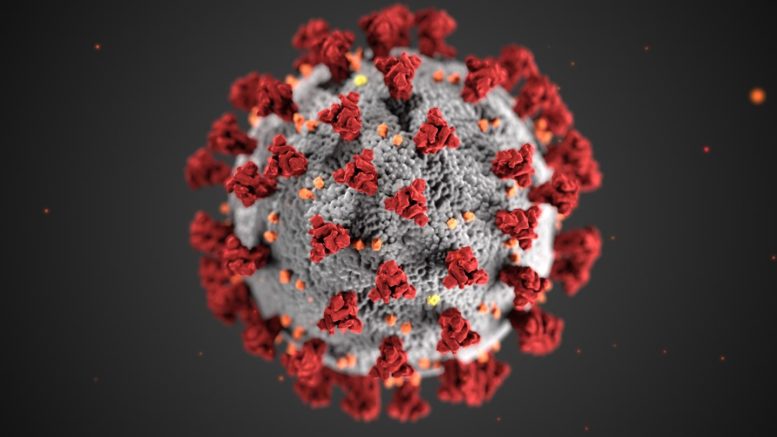A research team from La Jolla Institute for Immunology (LJI), the University of Liverpool and the University of Southampton has uncovered that people with severe COVID-19 cases may be left with more of the protective "memory" T cells needed to fight reinfection.
"The data from this study suggest people with severe COVID-19 cases may have stronger long-term immunity," says study co-leader LJI professor Pandurangan Vijayanand, MD, PhD.
The research, published Jan. 21 in Science Immunology, is the first to describe the T cells that fight SARS-CoV-2 in "high resolution" detail.
"This study highlights the enormous variability in how human beings react to a viral challenge," adds co-leader Christian H Ottensmeier, MD, PhD, FRCP, a professor at the University of Liverpool and adjunct professor at LJI.
Since early in the COVID-19 pandemic, scientists at LJI have investigated which antibodies and T cells are important for fighting SARS-CoV-2. As experts in genomics, Vijayanand and Ottensmeier have used sequencing tools to uncover which T cell subsets may control disease severity. In October, the team published the first detailed look at how CD4+ T cells respond to the virus.
For the new study, the researchers used a technique called single-cell transcriptomics analysis to study the expression of individual genes of more than 80,000 CD8+ T cells isolated from both COVID-19 patients and non-exposed donors. CD8+ T cells are the cells responsible for destroying virus-infected host cells. "Memory" CD8+ T cells are also important for protecting the body from reinfection against many viruses.
The team studied CD8+ T cells from 39 COVID-19 patients and 10 subjects who had never been exposed to the virus (their blood samples were given before the pandemic). Of the COVID-19 patients, 17 patients had a milder case that did not require hospitalization, 13 had been hospitalized, and nine had needed additional ICU support.
To the researchers' surprise, they saw weaker CD8+ T cell responses in patients with milder COVID-19 cases. The researchers saw the strongest CD8+ T cell responses in the severely ill patients who required hospitalization or ICU support.
"There is an inverse link between how poorly T cells work and how bad the infection is," says Ottensmeier. "I think that was quite unexpected."
One could expect to see a stronger CD8+ T cell response in the mild cases, since these are the cases where the immune system was equipped to fight off a severe infection--but the study showed the opposite. In fact, CD8+ T cells in the milder cases showed the molecular signs of a phenomenon called T cell "exhaustion." In cases of T cell exhaustion, cells receive so much immune system stimulation during a viral attack that they are less effective in doing their jobs.
While more research is needed, Vijayanand and Ottensmeier think it is worth studying whether T cell exhaustion in the mild COVID-19 cases may hinder a person's ability to build long-term immunity.
"People who have severe disease are likely to end up with a good number of memory cells," says Vijayanand. "People with milder disease have memory cells, but they seem exhausted and dysfunctional--so they might not be effective for long enough."
The new study provides a valuable window into CD8+ T cell responses, but it is limited because it relies on the CD8+ T cells found in blood samples. As a next step, the researchers hope to shed light on how T cells in tissues hit hardest by SARS-CoV-2, such as the lungs, react to the virus. This step will be important because the memory T cells that provide long-term immunity need to live in the tissues.
"This study is very much a first step in understanding the spectrum of immune responses against infectious agents," says Ottensmeier. Going forward, the researchers hope to use single-cell sequencing techniques to look at CD8+ T cells in cancer patients with COVID-19 infection.
"This research highlights the power of these new tools to understand human immunology," says Vijayanand.
The new study, titled "Severely ill COVID-19 patients display impaired exhaustion features in SARS-CoV-2-reactive CD8+ T cells," was supported by the National Institutes of Health (grants U19AI142742, U19AI118626, R01HL114093, R35-GM128938, S10RR027366, S10OD025052, the William K. Bowes Jr Foundation, the Whittaker Foundation, the Wessex Clinical Research Network and the National Institute of Health Research UK.
Additional study authors include co-first authors Anthony Kusnadi, Ciro Ramírez-Suástegui, Vicente Fajardo and Serena J Chee, as well as Benjamin J Meckiff, Hayley Simon, Emanuela Pelosi, Grégory Seumois and Ferhat Ay.
DOI: 10.1126/sciimmunol.abe4782
Source: La Jolla Institute for Immunology

Be the first to comment on "Closer Look at T Cells Reveals Big Differences in Mild vs. Severe COVID-19 Cases"